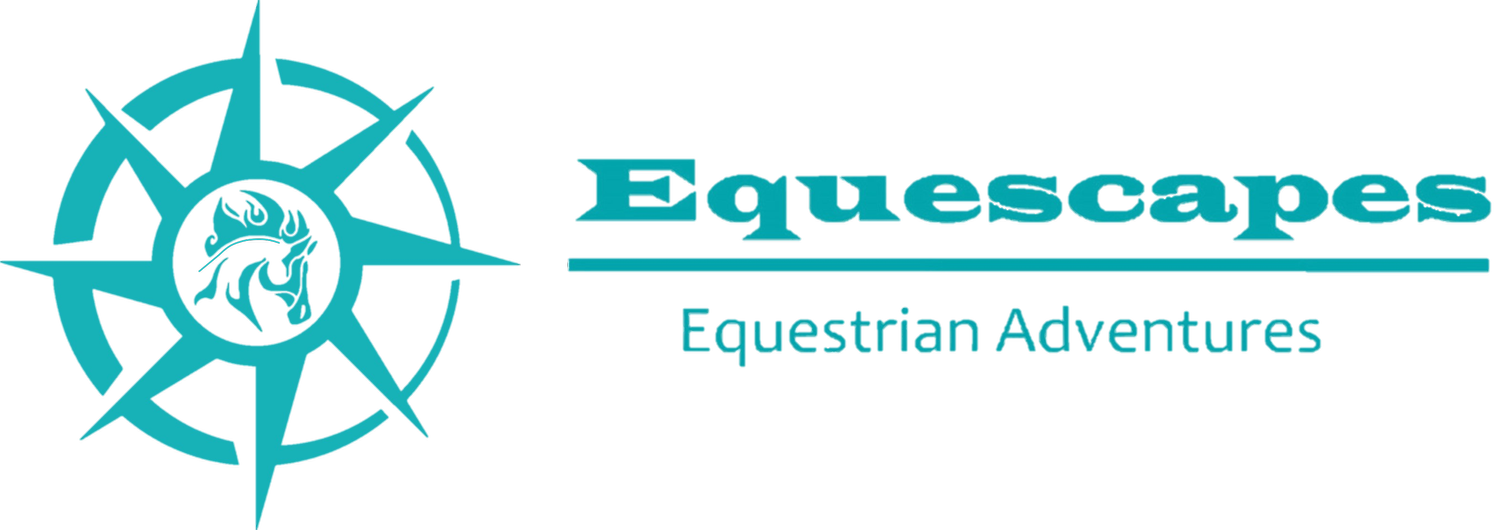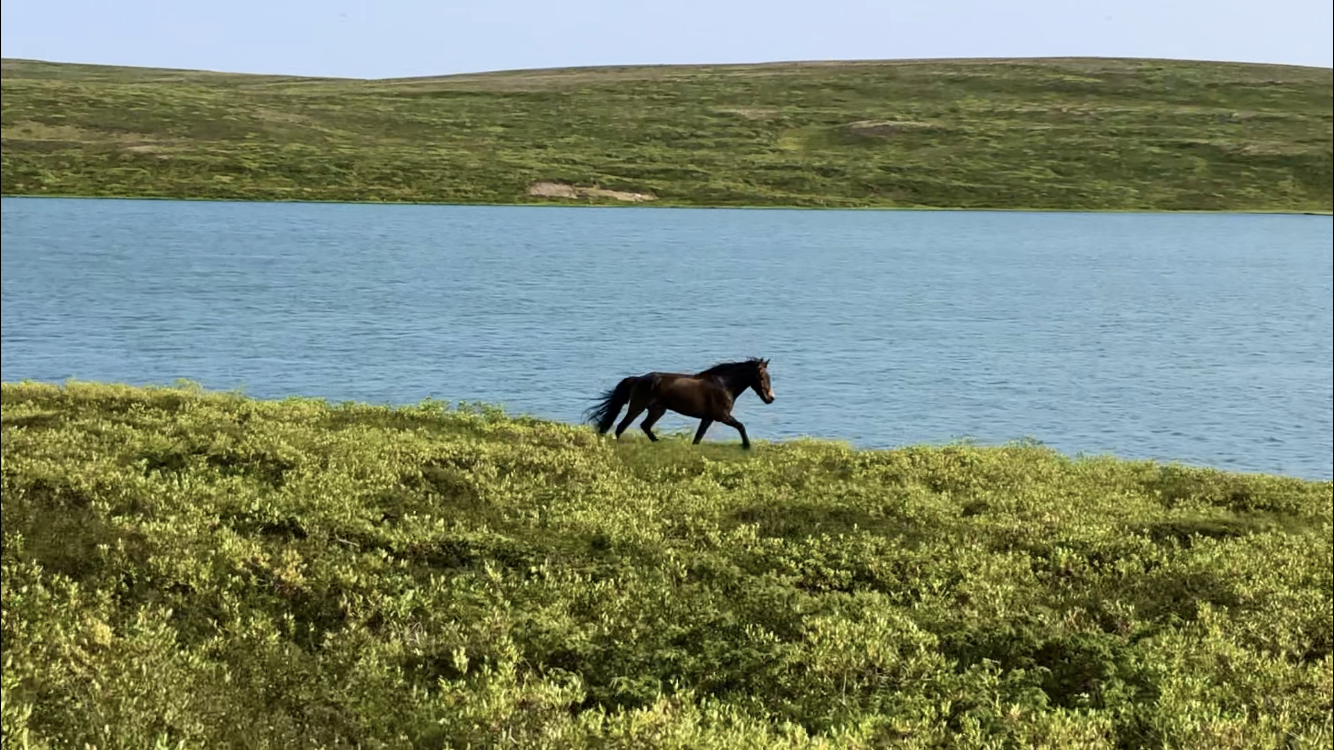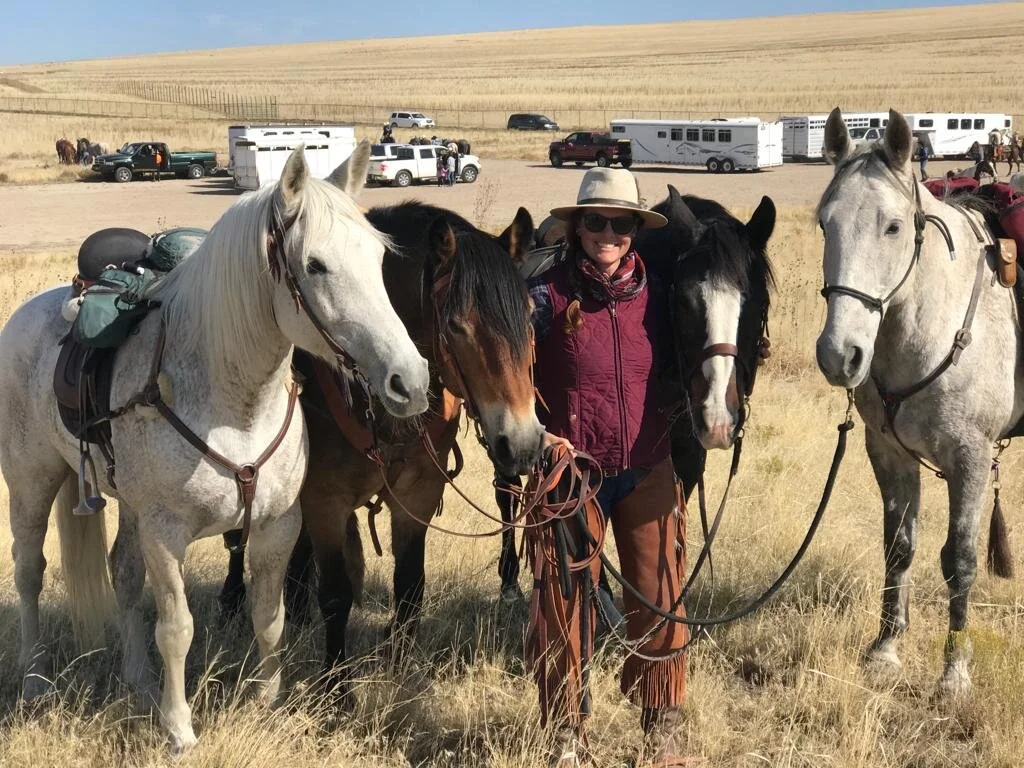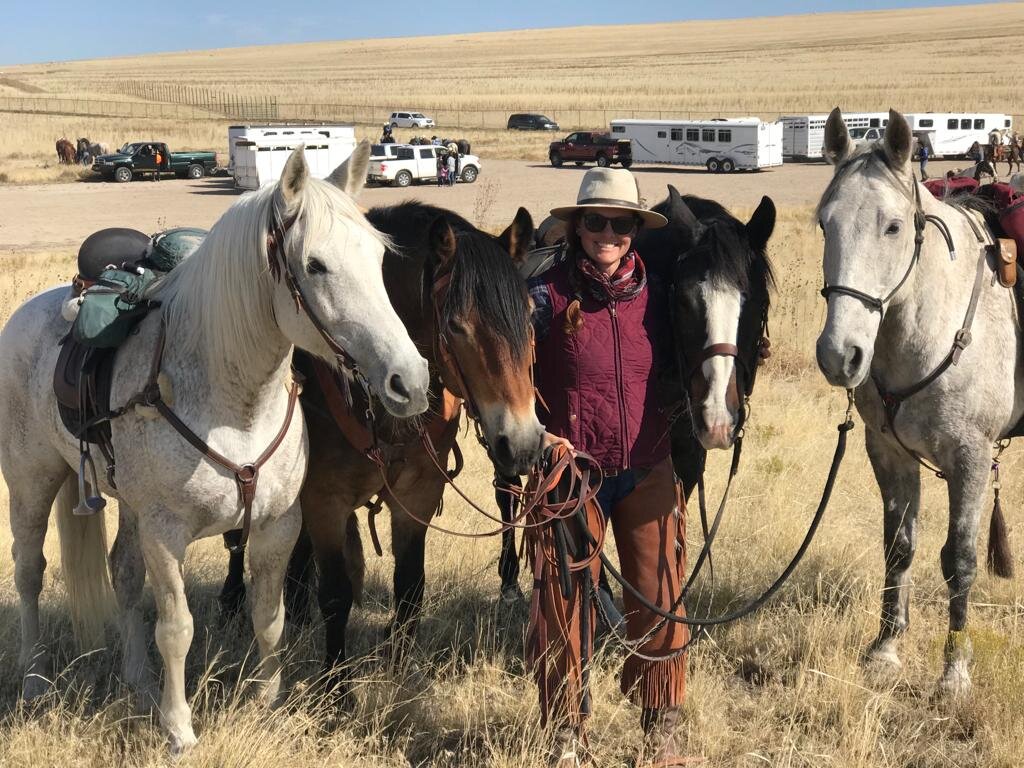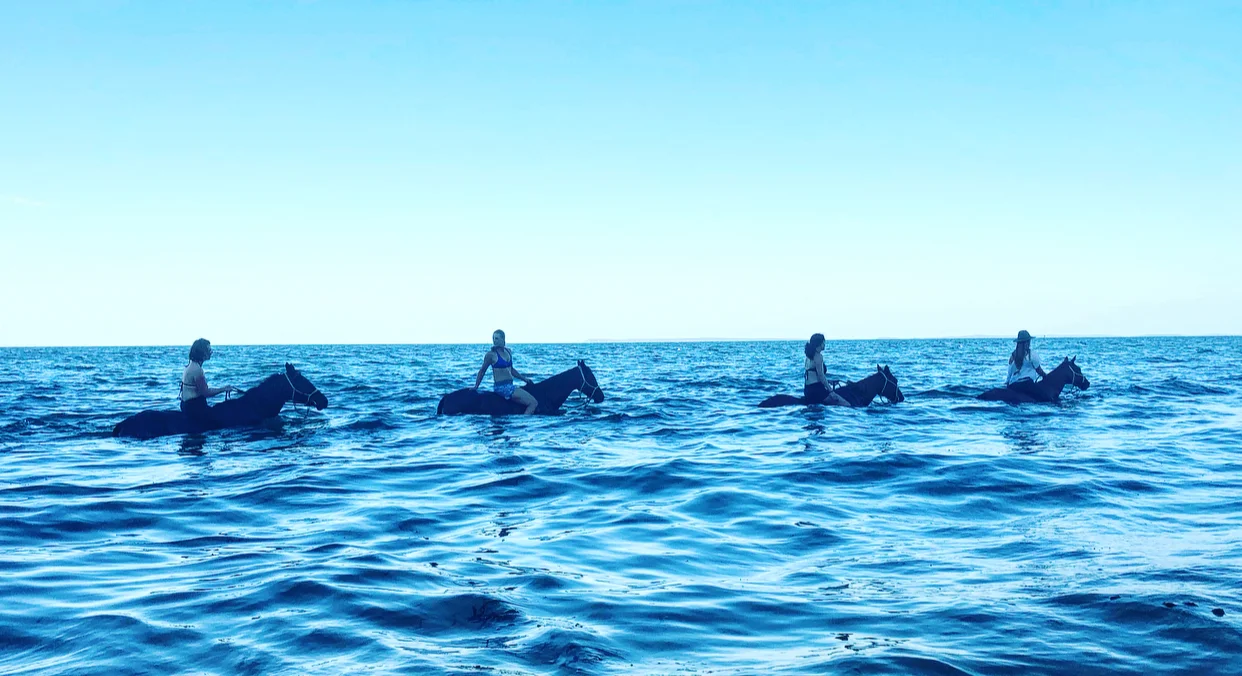Long before I set foot in Kenya, I had read the stories of the likes of Beryl Markham and Karen Blixen, adventurers who called Kenya home. Finding a kindred spirit in their tales, Kenya called to me for a very long time, and did not disappoint. Kenya is an intoxicating mix of wild animals, fast horses, and beautiful country, and the camaraderie of danger shared and overcome among riders creates lasting memories and friendships.
Masai Mara - Infinite Wilderness
The urban sprawl of Nairobi disappears beneath us as the tiny aircraft enters the clouds. Bounced and buffeted by every gentle breeze, we emerge above the clouds. Just a short while later, the clouds part as we begin to descend towards a landscape devoid of development, endless plains of red dirt and green grass. We can see herds of dark shapes moving in waves across the vast expanse but can’t tell from up here what they are.
The plane touches down surprisingly gently on a packed dirt airstrip, after a man on a motorcycle has ridden the length to make sure it’s devoid of wildlife. We hop out of the plane, greeted energetically by Daisy and Simon, our guides, as they bid farewell to their previous group, ushering them onto the plane and us into two safari vehicles.
Not 5 minutes from the airstrip we spot a lioness, strutting through the tall grass. Not stalking, not slinking, but proudly strolling while a herd of wildebeest gaze warily in her direction. Beneath the shade of an acacia, she joins another female and a young male and plops down for a siesta. Not a bad idea, as the clouds are dilating and the day is warming up. We spy zebra, giraffe, impala, topis, and cape buffalo. A pack of hyenas chew the leathery hide of a hippo carcass, the exposed skull, jaw, and massive teeth picked clean nearby. A couple of jackals patiently wait their turn in the shade. Among the wildlife, Masai shepherds watch over herds of multicolored cattle.
A Day in the Life on a Horseback Safari
Dawn
I’m having a dream about zebras galloping across the plains when I’m gently awoken by the soft murmur of footsteps outside my tent and habari za asubuhi (good morning in Swahili) as the camp staff set a bowl of warm water, tea and coffee outside my tent door. I roll out of bed and right into my riding pants, physically ready to go but mentally still dreaming about zebras, or maybe a little fuzzy from an evening of gin and tonics.
We sip tea and coffee and nibble on pastries as the sun casts its first light across the savannah. As soon as we’re remotely caffeinated, we mount up. The grooms, up well before dawn to feed and tack the horses, have polished our saddles since yesterday and they catch the slanted rays of the early morning sun, now just above the horizon. I love these dawn rides the most - I really hate the part where I have to get out of bed, but once I’m on the horse it’s magical. Droplets of dew sparkle on every branch and blade of grass, and everything from the air to the animals feels shiny, clean, and new. There’s still a bite to the breeze and I soak it up, knowing that the sun will be hot and high overhead before too long. The cool mornings are a great time to spot hippos out of the water, returning from their nightly jaunts, and large herds of wildebeest, antelope, zebras, and giraffe, grazing peacefully knowing the lions are done hunting for the night. These morning rides start out pretty mellow as horses and riders alike take their time waking up, but by the time we ride back into camp a few hours later, we’re all revved up and ready to go. Just in time for breakfast.
Breakfast
Breakfast is the real deal, each and every day. A full English breakfast with bacon, sausage, eggs cooked any which way you like, grilled tomatoes, fried mushrooms, buttered toast, fruit, yogurt, muesli, and of course, more coffee and tea with rusks. It’s a leisurely affair, and by the time we’ve finished, our tents have been made up for the day: beds made, windows rolled up, pajamas folded, solar lights set out in the sunshine to charge, and our boots have been polished to a shine I’ve never seen before.
Morning Ride or Game Drive
If it isn’t a moving day, we’ll go out in the vehicle for a game drive and try to cover some ground in order to spot animals we will try to go back out and see on horseback in the afternoon. Often these include elephants, lions, or even cheetah.
We return in time for lunch and a siesta before the afternoon ride. If it’s a moving day, we will mount back up again after breakfast and take our lunch and siesta somewhere in the bush - the game vehicle will meet us with tables and chairs, a scrumptious picnic, and a full bar. Cushions and blankets are laid out for a bush nap, and we all split up to claim cushions and find a shady corner to read or sleep before carrying on. Moving days are the longest but we ride through the most incredible landscapes. Even in the heat of the day the landscape is never devoid of wildlife. In any given direction, you can spot the far away silhouettes of wildebeest grazing, jackals playing, birds circling overhead, and elephants ambling along in small groups.
The feel of watching animals on horseback versus in the vehicles is completely different. In the vehicles, we’re looking at them, but on horseback, we’re right in it with them, a part of the landscape, a fixture in the circle of life here. Often, the horses will alert us to animals before we spot them, and we’re always wary of the horses’ signals when trekking through tall grass or through deep scrub brush, anywhere that could make for a perfect ambush. We approach animals strategically on horseback, staying downwind of the elephants and speaking quietly, not moving too fast around large herds of wildebeest and antelope (unless we want to incite a stampede, which is great fun!), and never EVER turning our backs on the lions. In the vehicles, we can sometimes get much closer but there isn’t the same connection with the landscape, with the wildlife, with the feel of a place.
Happy Hour
When we arrive into our next camp, our tents are set up and ready to go. Our luggage is exactly where we left it in the tent in the last camp, down to the contents of the night stand. It’s as if the whole camp has been magically transported - instead, a crew of 30 or so, including the horse grooms, kitchen staff, and the tent boys, have transported every last stitch of fabric and tent peg to a whole new location while we were out riding.
The bar is open as soon as we dismount and hand off our horses to the grooms, but showers come first. Hot water, heated by hand over a fire, awaits us in each shower tent (one shower for every two tents), with a lever to release the water. It’s a short shower, but the hot water is glorious after a day of dust and dirt while riding. Only after rinsing the adventure from our faces and our pores are we truly ready for happy hour.
Gin and tonic, the quintessential drink of East Africa, is the go-to, but the young bartender can mix up just about anything and comes well-equipped. We swap stories until dinner time and then the festivities move to the candlelit dinner table.
Dinner and Bedtime
Three-course meals are served nightly, paired with a selection of wine and topped off with desserts that are sheer perfection. By the time we finish eating there is a fire going, and we settle into the folding chairs to continue the festivities. Some evenings we are content to stay in camp and shoot the breeze, too tired to keep moving but having too much fun to go to bed just yet. Other nights we venture back out for another game drive in the vehicle with the spotlight, and on one such night we come upon a whole pride of lions feeding on a zebra carcass, the cubs playfully antagonizing their father, who patiently bats them away, ensuring he gets more than his fill of the pride’s catch.
By the time we turn in for bed, our sheets have been turned down and our beds are pre-warmed with hot water bottles. Our boots have been shined once again and are at the foot of our beds, the tent doors and windows closed against the evening chill. Each night I fall into bed exhausted but exalted, and dream of things like galloping zebras.
